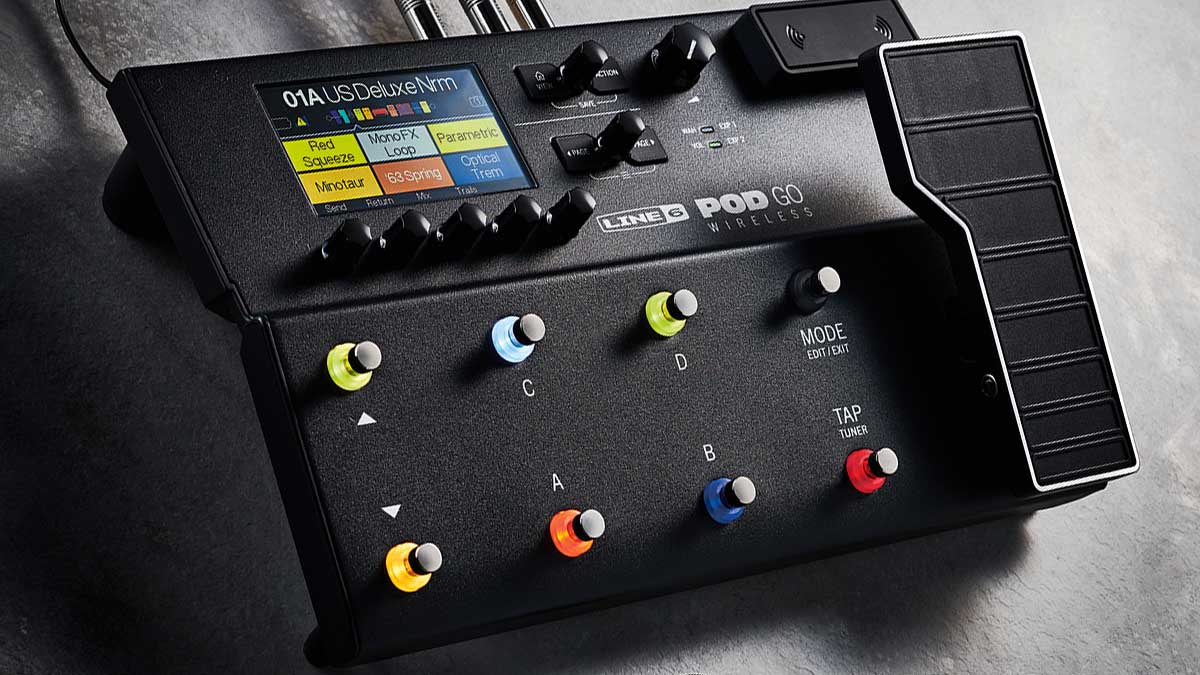Guitar World Verdict
If you’re just going to have one floor pedal and you find the prices of the Helix range are out of reach then the POD Go may be your ideal purchase. Okay, there’s less flexibility, but that can also translate as being easier to use.
Pros
- +
Compact and portable.
- +
Easy wireless capability.
- +
Integral treadle.
- +
Practical footswitching options.
- +
Expansive range of amps and effects.
Cons
- -
Signal chain is less flexible than other Line 6 models.
- -
A wireless headphone send would have been a bonus.
You can trust Guitar World
The Line 6 range of floorboard amp and multi-effects processors has become quite expansive with the various Helix/HX models each offering a different subset of facilities to suit players’ needs and budgets. But if budget is your main consideration, you may wish to take a look at the POD Go.
This unit first appeared last year, but Line 6 was unable to get a review unit to us at the time due to Covid and other factors. We’ve now not only got our hands on one, we’ve also got the brand-new alternative version: the POD Go Wireless, which adds wireless connectivity in the form of a built-in version of the Relay G10 system. Apart from the wireless facility, both models are identical.
The POD Go uses more plastic in its construction than the more expensive Helix models, but it actually offers much of the same modelling, albeit not presented in such a versatile fashion. It includes 85 guitar and bass amp models, 39 cab models, 16 mic models and over 210 effects, plus you can also store up to 128 custom or third-party IRs.
The major difference between this and the Helix/HX models is that a preset has a semi-fixed serial path, so there’s no splitting and merging of signal chains – it’s a straight line from input to output. In that line there are up to 10 blocks.
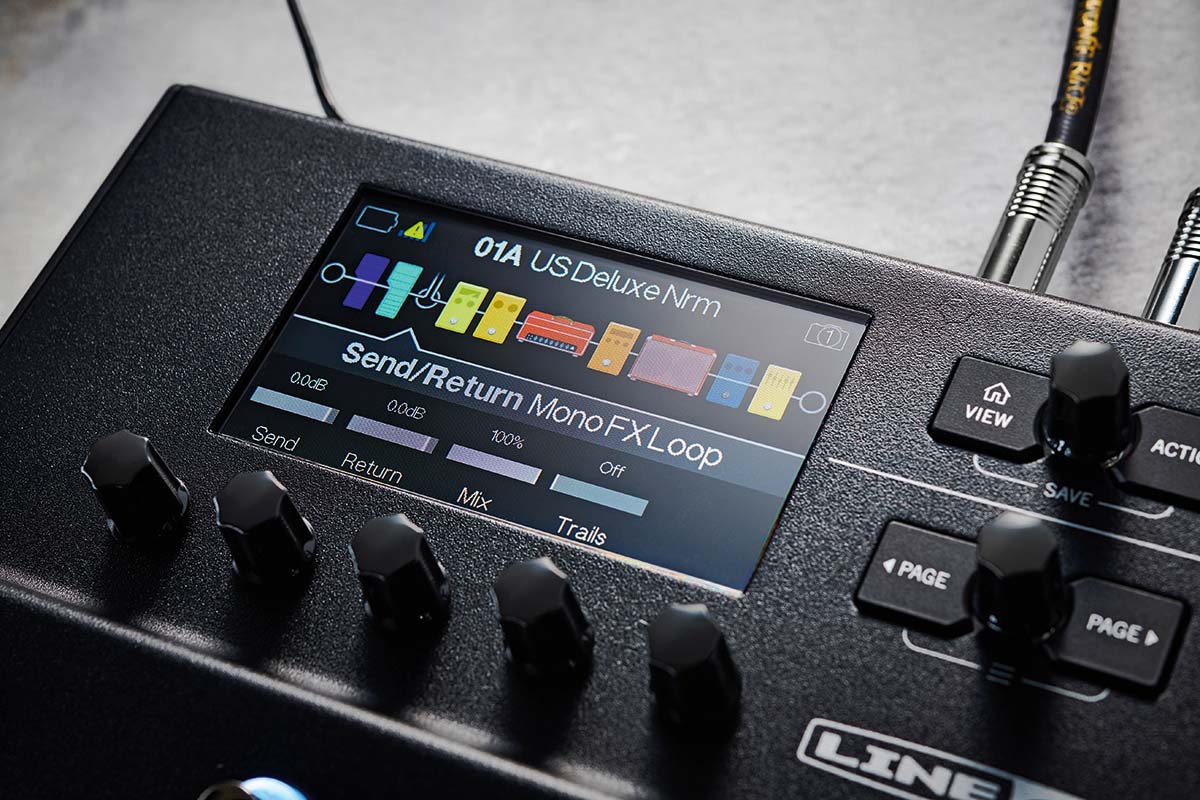
Six blocks are always present (Wah, Volume, FX loop, Amp/Preamp, Cab/IR and Preset EQ), plus four more can be added anywhere in the chain. You can choose from Distortion, Dynamics, EQ, Modulation, Delay, Reverb, Pitch/Synth, Filter and Looper blocks to fill the four vacant slots. There are 256 presets onboard (128 factory, 128 user) arranged in banks of four.
Editing is easy enough from the front panel, but you can take advantage of the POD Go computer-based editor and librarian available via a USB connection to speedily and smoothly set up your presets with a few mouse moves.
Sounds
Straight out of the box, the POD Go’s presets offer a fully processed signal chain with amp/cab and effects.
With Line 6’s usual varied selection of modelled amps and the possibility of loading your own IRs, there is tonal variation to cover many musical scenarios just waiting to be dialled in. Alternatively, if you just want it as a pedalboard for use with your amp, you can create a series of presets with the amp and cabinet modelling switched off just for that purpose.
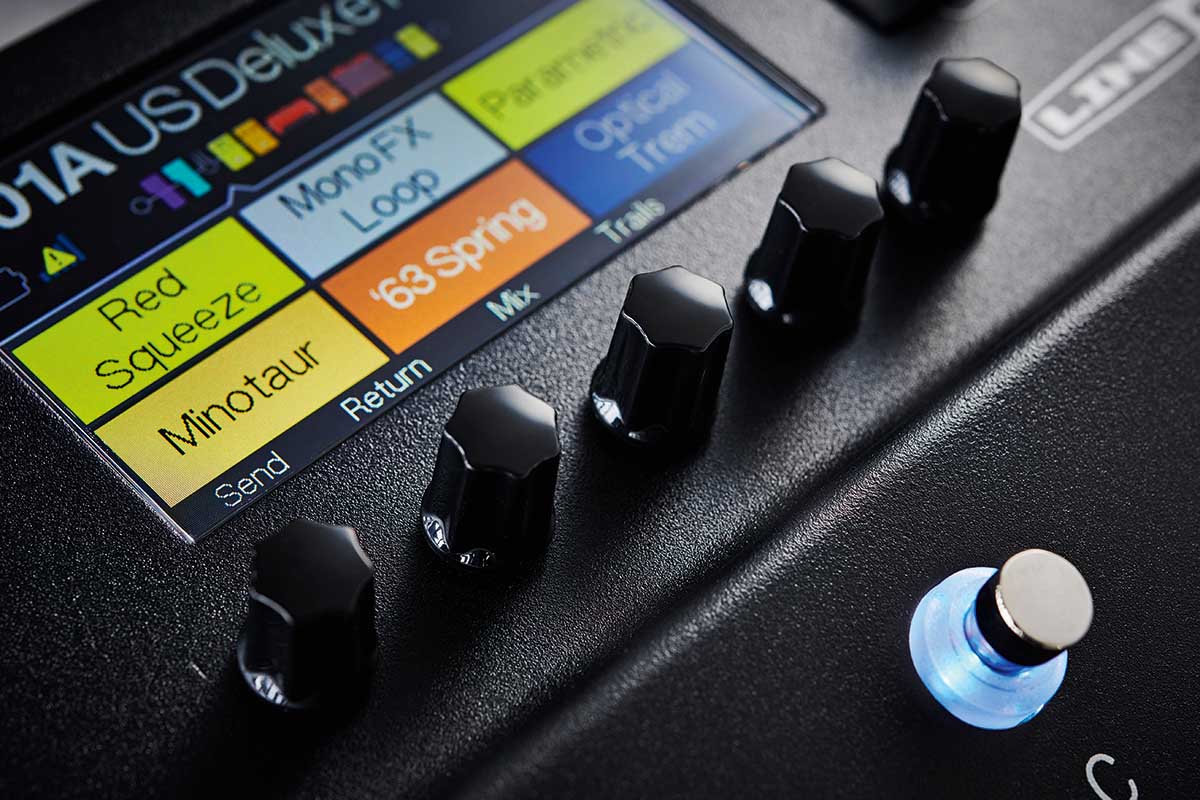
There’s an excellent variety of effects, plus you can use the effects loop to add external pedals (with or without footswitch control) or for employing the four-cable method (actually a three-cable method with the wireless version!). The eight footswitches and the pedal treadle on the POD Go are perfectly set up to give you plenty of flexibility for onstage use.
As standard, the unit boots up in Preset mode so you get the four presets in a bank assigned to footswitches A, B, C and D, with bank changes facilitated by the Up and Down footswitches – you can use them to scroll to the next needed bank and then hit the relevant A, B, C or D footswitch to load the preset.
A Mode footswitch toggles directly between Preset and Stomp mode, which lays out six of the effects blocks in the preset across all six of the footswitches – usefully equipped with a colour-coded ring to help identify at a glance which effect is which.
This facilitates the working method of having each preset as a different pedalboard perfectly, but there is a third mode that uses snapshots: presets within a preset that can recall every block’s bypass state and up to 64 simultaneous parameter settings. Snapshot mode is entered by pressing the up and down footswitches simultaneously.
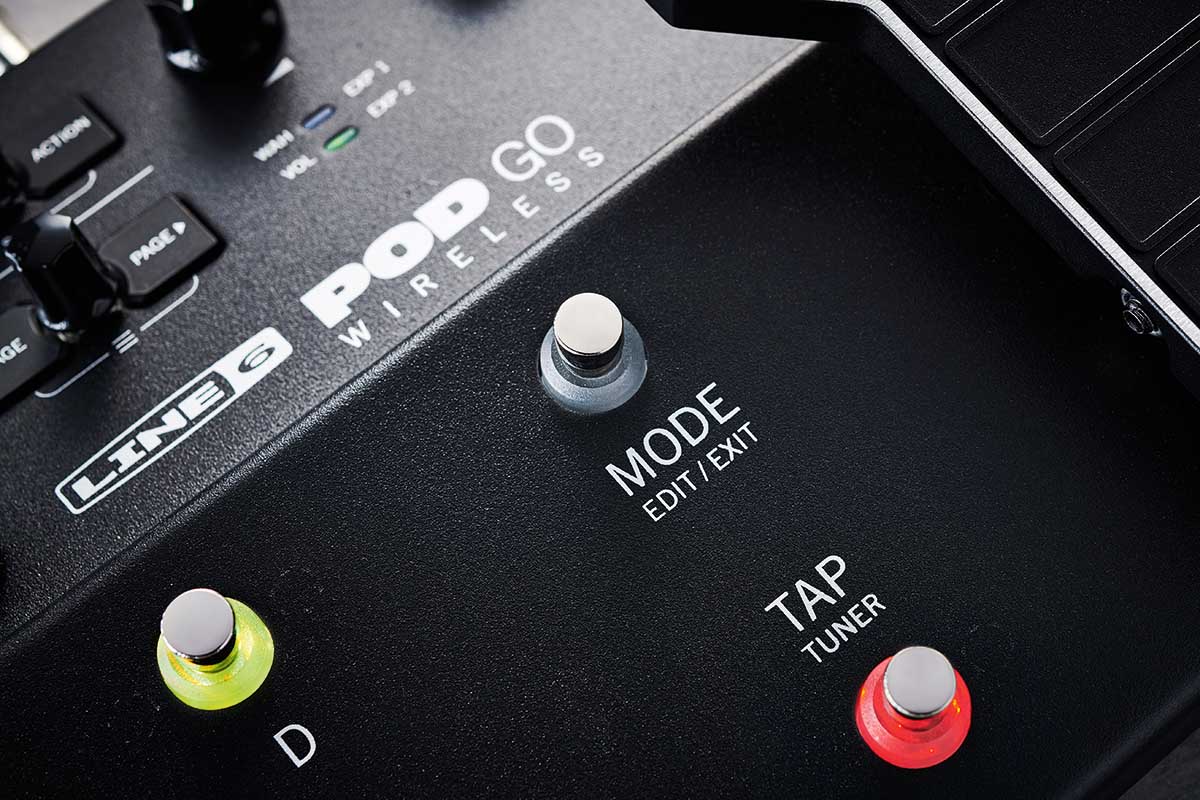
The POD Go Wireless comes with a Relay G10TII transmitter that plugs into any guitar with a flat-mounted front or side socket, and is shaped to slot perfectly into a Strat. The floor unit has a rear-panel slot in which you can store the transmitter when not in use, and the standard guitar input doubles as a charging port for it when you’re not using the POD Go.
Once charged, you’ll get about seven hours of playing time out of the transmitter and you get visual indications of its charged status; there are three green bars like a mobile phone in the floor unit’s display, and the transmitter itself has a green LED that flashes red if you have less than 30 minutes left.
The actual wireless performance is potent, the signal is strong and sparkly, but if you yearn for the treble loss engendered by using a long cable, there’s an adjustable parameter for HF roll-off. The range is good – line of sight is best, but we were also able to sit in the kitchen and have a snack while playing guitar and hearing the amp in the next room.
We do wonder why Line 6 didn’t go the whole hi-tech hog and add Bluetooth for wireless headphones, too. It would certainly make sense to be sitting on the sofa untethered from the whole unit enjoying a bit of headphone practice.

Verdict
If you’re just going to have one floor pedal and you find the prices of the Helix range are out of reach then the POD Go may be your ideal purchase. Okay, there’s less flexibility, but that can also translate as being easier to use – and its compact, easily portable size and built-in treadle are real plus points.
As with others in this genre, it’s a versatile unit that lends itself to onstage use into the PA or in front of your amp, whether standalone or integrated into a larger pedal rig. It’s also got everything you need for home practice and recording, too, including a 24-bit audio interface for recording and a one- or six-switch looper.
Either version offers great value for money, but whether the wireless version is worth the extra outlay is down to how you want to use it – it’ll certainly free up your onstage experience.
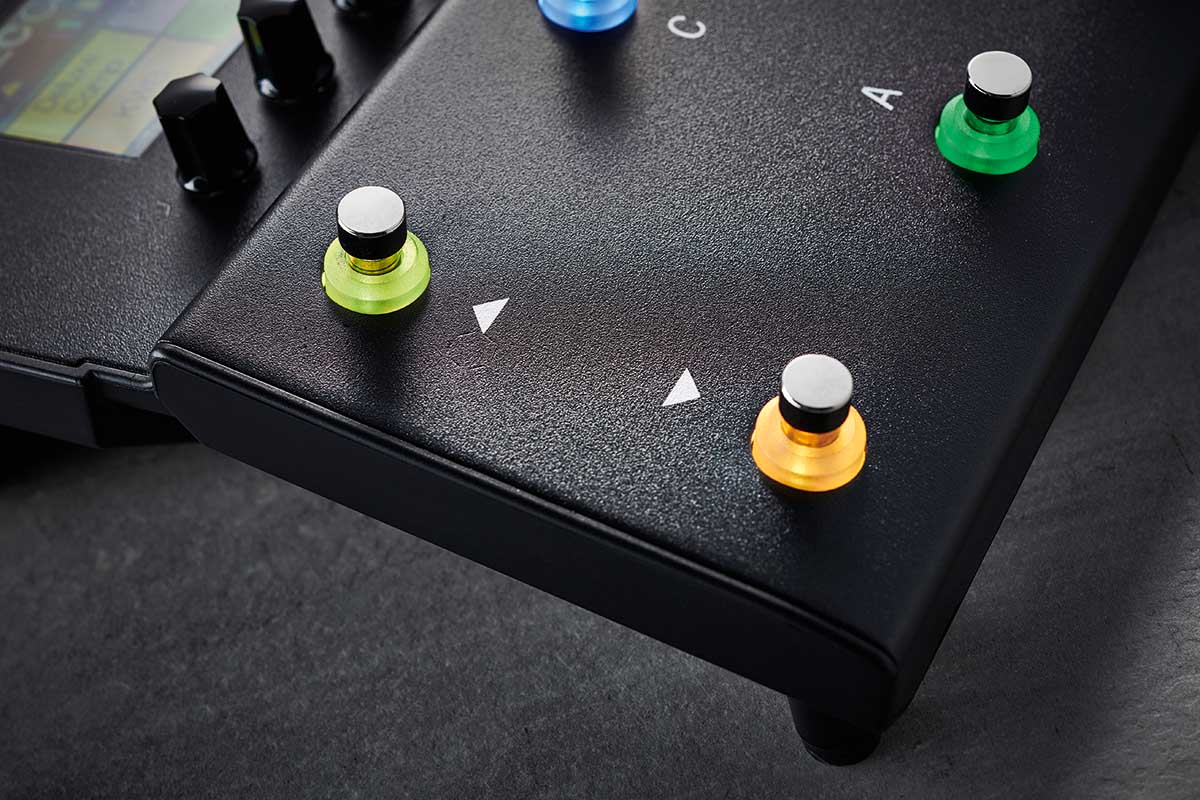
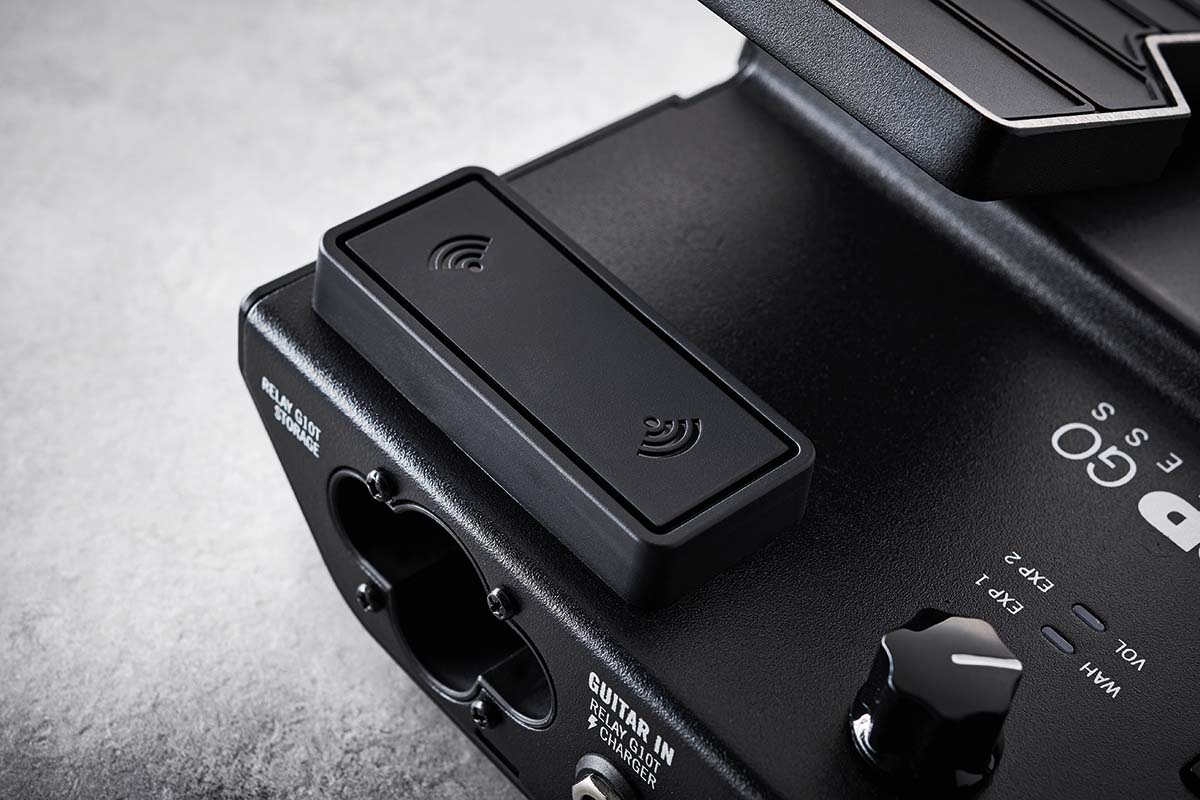
Specs
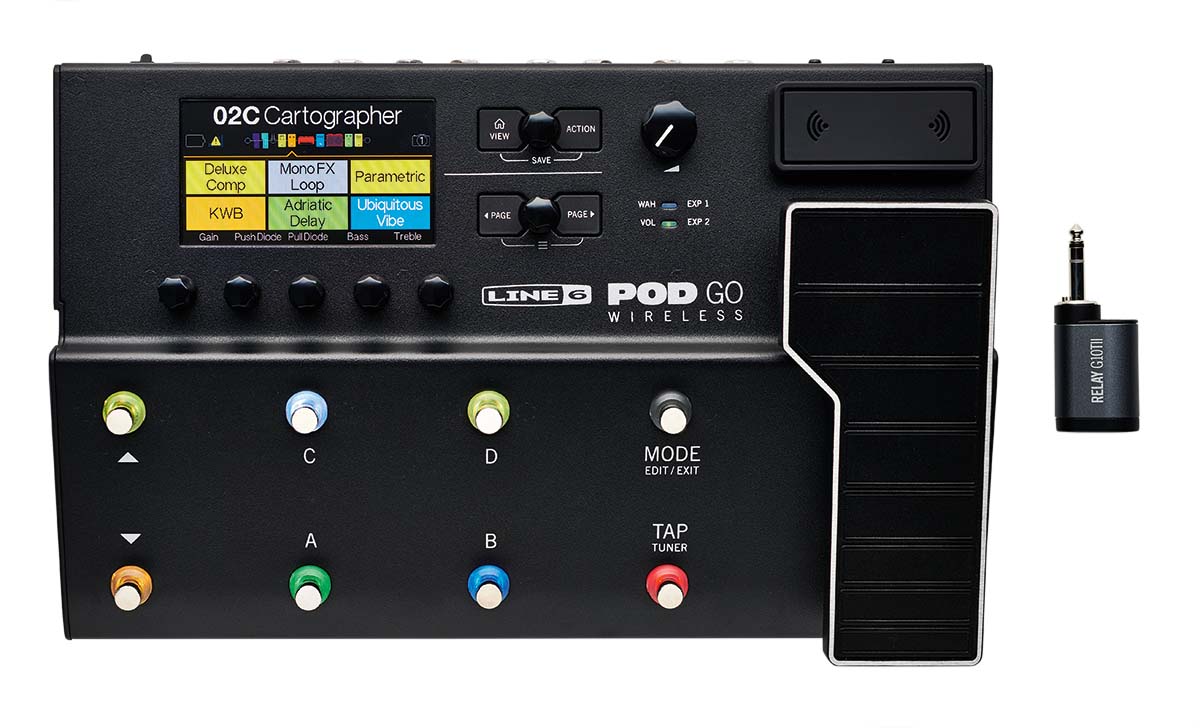
- PRICE: $599 / £549 (street price)
- ORIGIN: China
- TYPE: Multi-effects pedal with amp/cabs and effects
- FEATURES: 256 presets, tuner, tap tempo, looper (40 seconds of mono sampling, 20 stereo), MIDI control, USB audio interface capability
- CONTROLS: Volume, 5x soft knobs, 4x buttons, 8x footswitches
- CONNECTIONS: Standard inputs (L/Mono, R), standard outputs (L/Mono, R), Stereo Send, Return/Aux In (L/Mono and R), Exp pedal, MIDI In, MIDI Out/Thru, standard stereo headphone output, USB
- POWER: Supplied 9VDC DC-3h adaptor 2500 mA
- DIMENSIONS: 316 (w) x 120 (d) x 68mm (h)
- CONTACT: Line 6
Trevor Curwen has played guitar for several decades – he's also mimed it on the UK's Top of the Pops. Much of his working life, though, has been spent behind the mixing desk, during which time he has built up a solid collection of the guitars, amps and pedals needed to cover just about any studio session. He writes pedal reviews for Guitarist and has contributed to Total Guitar, MusicRadar and Future Music among others.
“The original Jordan Boss Tone was probably used by four out of five garage bands in the late ’60s”: Unpacking the gnarly magic of the Jordan Boss Tone – an actual guitar plug-in that delivers Dan Auerbach-approved fuzz
“This is a powerhouse of a stompbox that manages to keep things simple while offering endless inspiration”: Strymon EC-1 Single Head dTape Echo pedal review
